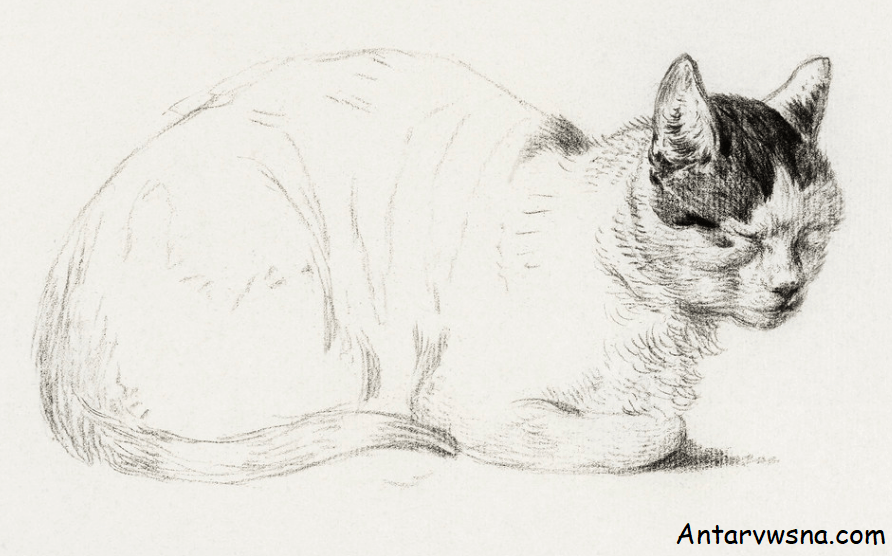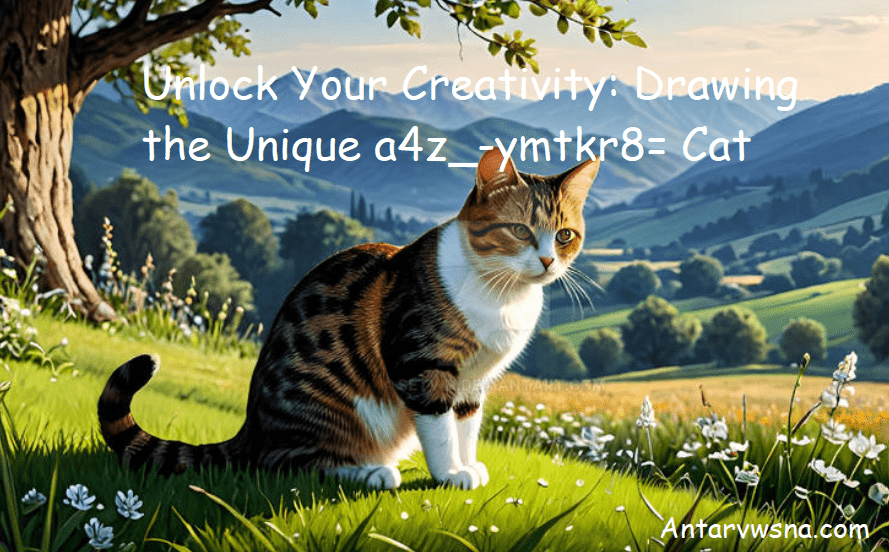Introduction
Are you ready to unleash your artistic potential and dive into the world of feline artistry? In this blog, we will explore the captivating process of drawing:a4z_-ymtkr8= cat”, a unique subject that will challenge your creativity while helping you master essential drawing techniques. This guide is designed for artists of all skill levels, providing detailed insights, tips, and techniques to bring this distinctive cat to life on your canvas. Whether you’re a beginner or an experienced artist, the steps outlined here will help you tap into your creativity and enhance your drawing skills. Let’s get started!
Understanding the drawing:a4z_-ymtkr8= cat”
1. Exploring the Unique Features of the drawing:a4z_-ymtkr8= cat”
Before we start drawing, it’s essential to understand what makes the drawing:a4z_-ymtkr8= cat” so unique. This cat has distinctive markings, expressive eyes, and a fascinating personality. Take a moment to observe different reference images of the drawing:a4z_-ymtkr8= cat” noting the variations in fur patterns, colors, and physical characteristics. Pay special attention to the cat’s facial expressions and body language, as these elements are key to capturing its essence in your drawing.
2. Gathering Your Drawing Materials
To begin your artistic journey, you’ll need the right materials. Here’s a list of essential items for drawing the a4z_-ymtkr8= cat:
- Drawing Paper: Choose high-quality paper with a smooth texture for pencil drawings.
- Pencils: Use a range of pencils from H (hard) to B (soft) for varying shading effects. A standard set includes HB, 2B, 4B, and 6B pencils.
- Eraser: A kneaded eraser is ideal for precise corrections and highlights.
- Blending Tools: Blending stumps or tissue paper can help create smooth transitions in shading.
- Reference Images: Collect a variety of photos of the a4z_-ymtkr8= cat to guide your drawing.
3. Creating a Basic Outline
Start by sketching a basic outline of the drawing:a4z_-ymtkr8= cat” using light pencil strokes. Focus on capturing the proportions and shapes of the cat’s head, body, and limbs. Pay attention to the placement of key features such as the ears, eyes, and nose. It’s important to keep your lines light so they can be easily adjusted as you refine your drawing. Once you are satisfied with the outline, you can begin adding details.
4. Adding Details to the Face
The face is the focal point of any cat portrait, especially when drawing the unique drawing:a4z_-ymtkr8= cat”. Start by outlining the eyes, ensuring they are positioned correctly. The eyes should reflect the cat’s personality—are they wide and curious, or narrow and mischievous? Add details such as the pupils, irises, and highlights to make them come alive. Don’t forget to outline the nose and mouth, paying close attention to the contours and expressions that define this particular cat.
5. Fur Texture Techniques
Capturing the fur texture is crucial when drawing the a4z_-ymtkr8= cat. Use layering techniques to create depth and realism. Begin with a light base layer, using an HB pencil to sketch the direction of the fur. Gradually build up darker tones with softer pencils, applying varying pressure to create contrast. Use blending tools to smooth out harsh lines but leave some areas textured for a natural appearance. Observing how light falls on the fur in your reference images will guide you in shading effectively.
6. Shading and Lighting
Shading is essential for adding dimension to your drawing of the a4z_-ymtkr8= cat. Identify the light source in your reference images and use it as a guide for your shading. Apply darker tones in shadowed areas and lighter tones where the light hits. Techniques such as hatching (drawing parallel lines) and cross-hatching (intersecting lines) can enhance the depth of your drawing. Gradually build up layers to achieve a smooth transition from light to dark, ensuring a lifelike representation.
7. Capturing the Eyes’ Expression
The eyes are often referred to as the windows to the soul, and they play a significant role in conveying emotion in your portrait of the drawing:a4z_-ymtkr8= cat”. Focus on the shape and size of the eyes, ensuring they match the cat’s expression. Use darker shades around the edges of the irises and lighter tones towards the center to create depth. Highlights can be added to the pupils to simulate reflection, making the eyes appear glossy and alive.

8. Adding Final Details
Once the primary features are established, it’s time to add the final details. Refine the lines around the eyes, nose, and mouth to enhance clarity. You may also want to add whiskers using a sharp pencil for fine lines. Don’t forget to include any unique markings or patterns that characterize the drawing:a4z_-ymtkr8= cat” A few well-placed details can make a significant difference in the overall impact of your portrait.
9. Creating a Background
While the focus is on the a4z_-ymtkr8= cat, a well-thought-out background can enhance your drawing. Consider adding elements that complement the cat’s personality, such as a soft pillow, a sunny window, or a playful toy. Use light shading in the background to avoid drawing attention away from the main subject. The background can help create context and set the mood for your artwork.
10. Reviewing and Refining Your Artwork
Once you feel satisfied with your drawing, take a step back and review your work. Look for areas that may need more detail or refinement. It can be helpful to take a break and return with fresh eyes. Use this time to consider if any adjustments could enhance the overall composition. Don’t hesitate to erase and modify as needed; this is a natural part of the artistic process.
11. Exploring Color Techniques
While the focus of this blog is on drawing, exploring color techniques can elevate your artwork significantly. If you choose to color your drawing of the a4z_-ymtkr8= cat, consider using colored pencils or watercolors. Pay attention to the color palette of your reference images, capturing the various shades present in the cat’s fur. Layering colors can create depth, while blending techniques can help achieve a smooth finish. Always test colors on a separate sheet before applying them to your main drawing.
12. Understanding Cat Anatomy
A solid understanding of cat anatomy can improve the accuracy of your drawing. Study the skeletal structure and muscular composition of cats to understand how their bodies move and pose. This knowledge will help you portray the a4z_-ymtkr8= cat in more dynamic and realistic positions. Focus on proportions and the relationship between different body parts. You may find it helpful to sketch simple shapes to outline the cat’s body structure before adding details.
13. Incorporating Personal Style
As you gain confidence in drawing the a4z_-ymtkr8= cat, consider incorporating your personal artistic style into the piece. Experiment with different line weights, patterns, or even abstract elements that reflect your creativity. Whether you prefer a realistic approach or a more stylized representation, let your individuality shine through. This will not only make your artwork unique but also enhance your artistic voice, setting your work apart from others.
14. Utilizing Reference Photos Effectively
Reference photos are invaluable tools in the drawing process, especially for capturing the essence of the a4z_-ymtkr8= cat. Collect a variety of images from different angles, lighting conditions, and settings. Analyze how the cat’s features appear in each photo and use them to inform your drawing. You can also create a mood board that showcases various poses and expressions, helping you to visualize the final piece and guiding your creative decisions.
15. Showcasing Your Finished Work
After you complete your drawing of the a4z_-ymtkr8= cat, consider showcasing your artwork. You can share it on social media platforms or art communities to receive feedback and encouragement. Displaying your work allows you to connect with other artists and animal lovers, fostering a sense of community. Additionally, consider framing your artwork or creating a portfolio to document your artistic journey. This can inspire you to continue developing your skills.

Conclusion
Drawing the unique a4z_-ymtkr8= cat is an exciting journey that can unlock your creativity and enhance your artistic skills. By understanding the cat’s features, mastering techniques for shading and texture, and capturing its essence, you can create a stunning portrait that reflects its personality. Remember that practice is key; the more you draw, the more you’ll improve. So grab your materials and let your creativity flow as you embark on this artistic adventure! Happy drawing!
FAQs for “Unlock Your Creativity: Drawing the Unique a4z_-ymtkr8= Cat”
1. What materials do I need to start drawing the a4z_-ymtkr8= cat?
To start drawing the a4z_-ymtkr8= cat, you’ll need basic drawing materials such as high-quality pencils (HB, 2B, 4B), erasers, and sketch paper. Optional tools include colored pencils or watercolors for adding color and fine-tip pens for outlining.
2. How can I improve my drawing skills?
Improving your drawing skills takes practice and patience. Regularly sketch different subjects, study anatomy, and experiment with various techniques. Consider taking online classes or watching tutorials to learn from experienced artists and gain new insights.
3. Can I draw the a4z_-ymtkr8= cat in my own style?
Absolutely! While it’s essential to observe the unique features of the a4z_-ymtkr8= cat, feel free to incorporate your artistic style. Experiment with different line weights, colors, and textures to make the drawing your own.
4. How do I choose the right reference photo for my drawing?
Select reference photos that showcase the a4z_-ymtkr8= cat from various angles and in different lighting. Choose images that highlight unique features, expressions, and poses, as these will help you capture the essence of the cat in your drawing.
5. What should I do after finishing my drawing?
Once you finish your drawing of the a4z_-ymtkr8= cat, consider sharing it with others for feedback. You can frame the piece for display, create a portfolio to document your progress, or even submit it to online art communities to connect with fellow artists.





